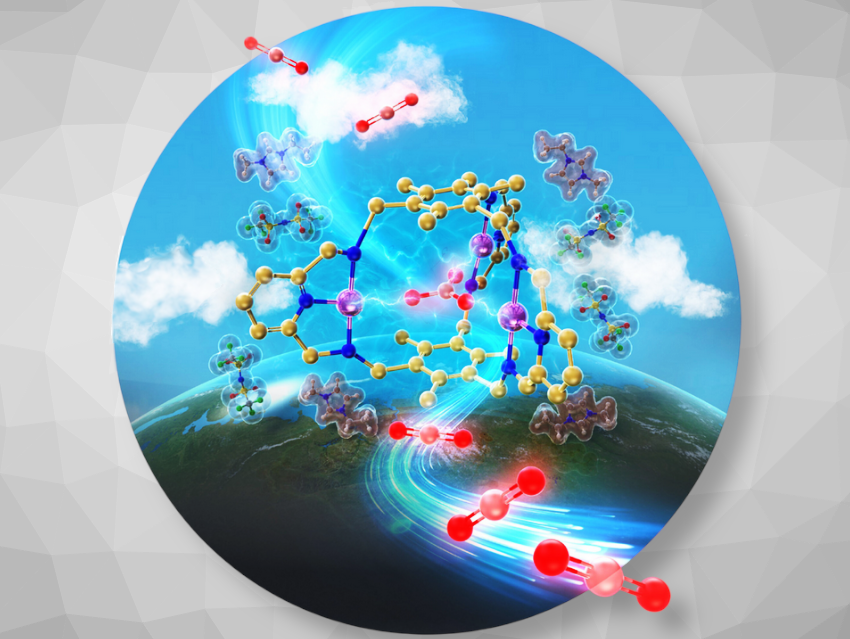In this issue, Frank Caruso et al. review the assembly and function of antimicrobial phenolic materials. Chengzhou Zhu et al. summarize the tuning of atomically dispersed metal sites in nanozymes for sensing applications. The Minireview deals with the exploration of glycospace: obtaining therapeutic glycans via automated synthesis (James Suri, Ryan Gilmour).
In the original research section, Toshiyuki Itoh et al. describe the electrochemical CO2 fixation and release cycle with a trinuclear zinc complex for direct air capture (see picture). Viktoria H. Gessner et al. succeeded in the isolation and structure elucidation of the heterocumulene anions [NCC–L]− with L=CO, CS, or N2. Tatjana N. Parac-Vogt et al. used a discrete hybrid vanadium-oxo cluster as a targeted tool for selective protein oxidative modifications and cleavage. André B. Charette et al. present a universal reagent for mild and stereospecific nucleophilic substitution of alcohols with amines, and Shixue Dou et al. tailored a water-in-DMSO electrolyte for ultra-stable rechargeable zinc batteries.
- Angewandte Chemie 13/2025: Dispersed Sites,
Angew. Chem. Int. Ed. 2025, 64 (13).
Sponsored content is not written by and does not necessarily reflect the views of ChemistryViews’s editorial staff.


